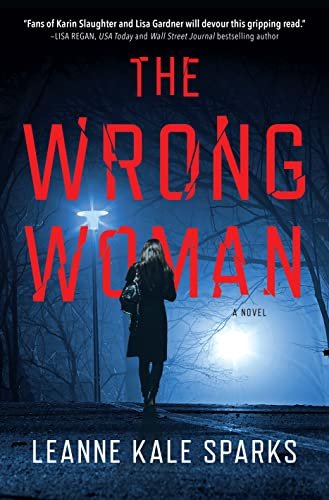By Jessi Honard and Marie Parks, co-authors of Unrelenting.
Diverse representation in fiction is important, full stop. We hear that all the time, both as writers and as readers. But why? We’re co-authors, Marie Parks and Jessi Honard, and here’s our take on why and how to write LGBTQIA+ characters.
While we’ll be focusing on queer fictional characters, know that diverse representation—including race, ability, body type, gender, culture, neurodiversity, and more—deserves just as much love and attention.
It’s important to see yourself in stories.
When we were kids, there were very few instances of queer characters in children’s literature. Honestly, we’re struggling to think of any. As we grew up and started reading adult fiction, the situation wasn’t much improved.
As a result, we didn’t understand the full scope of the LGBTQIA+ rainbow. There were limited safe places to learn about these identities.
But you know what is a safe space? A cozy book you can curl up with in your favorite spot, read on your own time, and think about in the privacy of your own mind.
Imagine a world where queer readers are validated by the books they love. In this way, representation can literally save lives.
It’s important to see others in stories.
It’s not just about queer readers seeing themselves in literature, though. It’s about the whole world seeing queer characters in literature.
When non-queer readers witness LGBTQIA+ people within stories, it becomes easier to see actual, real-life queer people as heroic, capable, and nuanced, just like their cisgendered, heterosexual, and allosexual peers. They become less tokenized, and their experiences become more normalized.
We write speculative fiction, so we deal with fantasy, magic, and impossibility. But at the same time, we are creating the real world we wish to live in.
No, we don’t want to get attacked by sentient smoke, the way Bridget (the protagonist of Unrelenting) does. But we do want to live in a world where Bridget’s asexuality is accepted, cherished, and supported.
We also don’t want to have to keep secrets from competing magical factions the way Dan (a side character within the same novel) does. But we do want to live in a world where his bisexuality is not a source of tension or anguish.
So we’ve written an exciting world full of mystery, suspense, and magic. And in that world, our characters’ queerness is a nonissue. We believe this gives our readers a chance to envision and create this reality.
Tips for writing LGBTQIA+ characters as an ally.
Let’s be honest, you could take a series of masterclasses on the expansive topic of how to write LGBTQIA+ characters. No short article is going to teach you everything you need to know, and we certainly aren’t experts. But we hope to give you a few pointers to get started.
Before we jump in, we’ve run into two main camps of non-queer writers who want to write LGBTQIA+ characters, and yet they feel stumped. Do you fall into one of these camps?
Writers in camp one recognize the importance of writing diverse characters, but because their own life experience doesn’t mirror their characters’, they are nervous about getting something wrong and offending everyone. If this is you, you are an awesome ally, and you’re loved and appreciated. In our experience, someone who worries about being disrespectful will find ways to ensure they are respectful in the end. Keep going.
Those writers sitting in camp two also recognize the importance of writing diverse characters. However, they’re so gung-ho, they don’t bother with research or examining their own biases and assumptions. If this is you, please slow your roll. Your heart is in the right place, but your execution will likely come across as inauthentic and possibly even offensive.
We recommend digging deep into reputable resources like Writing the Other. Not only are their articles, books, and lectures instructive, they’re super interesting! Plus, you can dive into extremely important topics like intersectionality, which can dramatically impact how you write your characters across the board.
We also challenge you to do your research, yourself. And by that, we don’t mean asking your friendly neighborhood queer buddy to exhume all their trauma.
Recognize that queerness is all around us. In the US, over 20% of Gen Z adults and 10% of Millennials identify as LGBTQIA+, so odds are you know queer people (even if they’re not out). With that in mind, include a variety of queerness in your stories. Avoid having a single, token representative of the community (and for the love of Pete, don’t immediately kill them off or make them an under-developed baddie, as this is a tired and harmful trope).
Read diversely. Listen to real people’s stories. Work with a sensitivity reader and/or experts when you need information or advice, and pay them for their time and emotional labor. If someone tells you, “I can’t help,” honor their boundaries (and maybe examine if you’re asking too much).
Bottom line: Be respectful, and view the task of writing queer characters as an important and serious responsibility.
Writing LGBTQIA+ characters is an extremely worthwhile aspiration, and we applaud and celebrate you for taking the plunge. Together, we can co-create a beautiful, accepting, diverse world where there’s room for everyone at the table—and on the page.
About the guest bloggers:
Jessi Honard and Marie Parks are best friends, hiking and camping buddies, and unabashed nerds. They’ve been co-writing speculative fiction since 2009, and their 2022 contemporary fantasy debut, Unrelenting, was a finalist in the 2020 Book Pipeline Unpublished Manuscript contest. Jessi lives in the Bay Area of California with her partner, Taormina, and Marie lives in Albuquerque, New Mexico.





